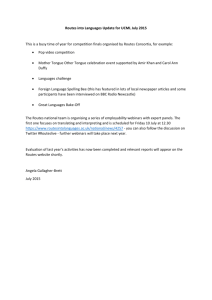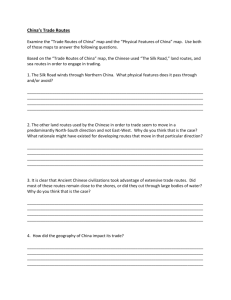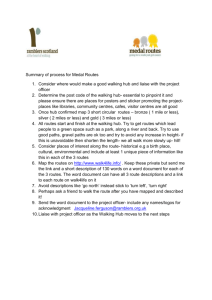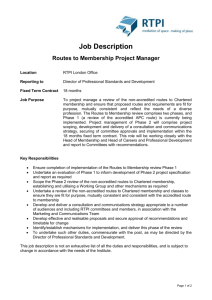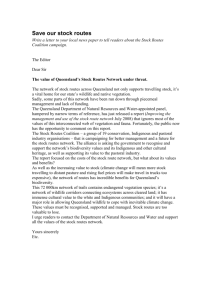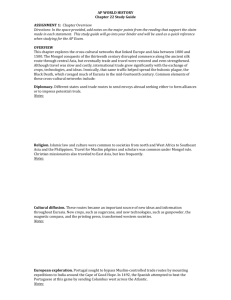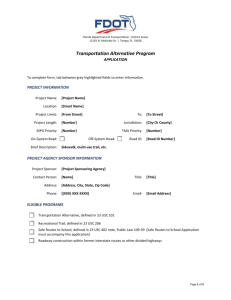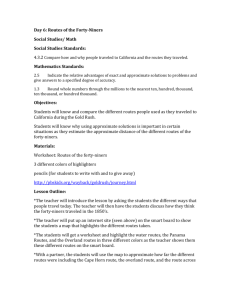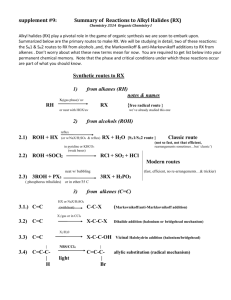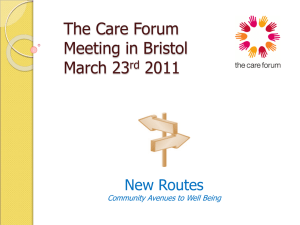North Carolina Hazardous Materials Transportation Route
advertisement
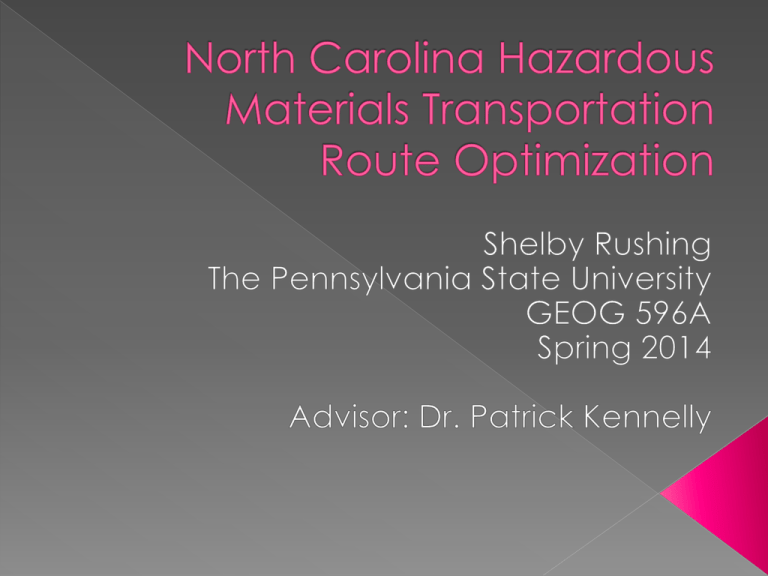
2.2 billion tons of HazMat transported each year in the U.S. 15,424 incidents in 2012 Risk increases in highly populated areas and around critical facilities Thoughtful route planning reduces risk Chemical transport routes not regulated › Exception: Certain tunnels Radioactive material routes are regulated Voluntary compliance helps companies avoid negative publicity Route planning must balance economic and safety concerns Longer routes add cost Shorter routes may increase population exposure risk Optimal routes must consider both cost and safety IEM has partnered with the State Hazardous Materials Task Force since 2009 Produced statewide hazard profiles for use by Local Emergency Planning Committees (LEPCs) Data collection and hazard identification Phase Year DPRs Covered 1 2009 1, 2 2 2010 3 3 2011 4, 6 4 2012 8, 9 5 2013 5, 7 “Clicker Counts” › High costs, limited sample size › Limited value Collect data directly from manufacturers › Produce linear features for aggregated shipment volumes and routes Rank Chemical Name Uses 1 Chlorine Water treatment 2 Hydrogen Fluoride Chemical catalyst 3 Ammonia Refrigerant, fertilizer 4 Sulfur Dioxide Water treatment 5 Ethylene Oxide Disinfectant and production of plastic, antifreeze, and surfactants 6 Formaldehyde Preservative, plastics and adhesives 7 Toluene Diisocyanate Curing agent in plastics and coatings 8 Hydrogen Chloride Production of acid, chemical reagent 9 Butane Gasoline blending and a fuel gas 10 Vinyl Acetate Monomer Production of latex and other plastics and adhesives Formal risk assessments in major metro areas Review hazard mitigation options with local officials 2013 Pilot in Wake County (Raleigh area) Upcoming phase will cover Cumberland, Johnston, and New Hanover counties Examine potential impact of spills on: › Populations › Critical facilities Suggest alternate routes using Network Analyst › Use protective action buffers Step # Description 1 Buffer each HazMat transport route segment using the appropriate protective action distance for the chemical of concern. 2 Overlay the buffers with the census blocks. 3 Intersect buffers with census blocks. 4 Calculate the proportionate population in the intersecting portions of the census blocks. 5 Add up the population values for all affected blocks within the buffer zone for each road or rail segment. 6 Assign these combined population values to the road/rail segments. Plot critical facilities on map Overlay transportation corridor buffer zones Tally number of facilities that fall within each buffer Use facility buffers in network analysis Without optimization With optimization Many current routes will not be optimal Maps with additional travel time vs. reduced exposure potential Potential exposure numbers by city, county, and region Useful to LEPCs, responders, emergency planners, and zoning boards Data collection: May 2014 Analysis/Development: June-July 2014 Submit Report: August 2014
